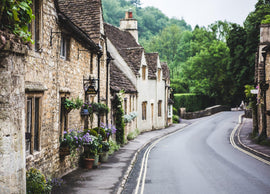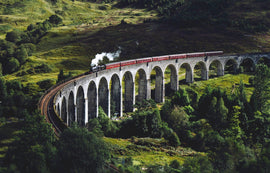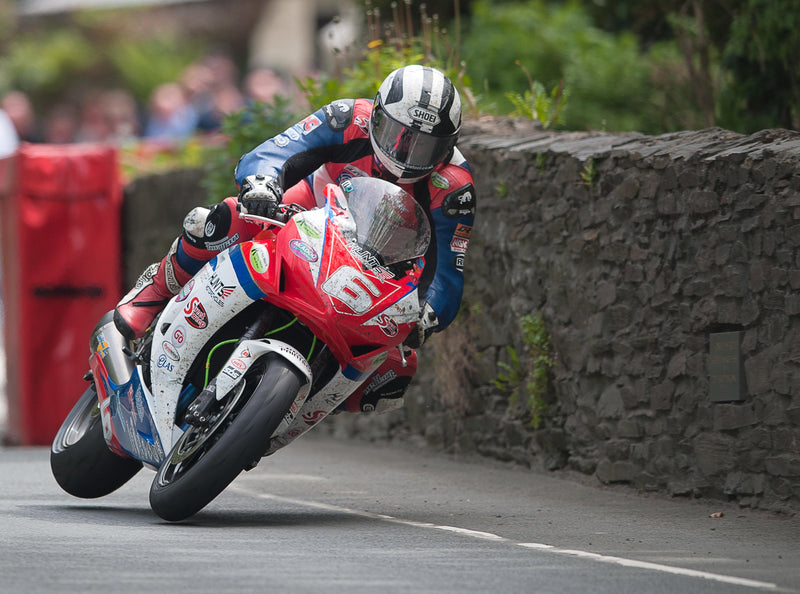
Every May and June, the global biking community assembles for the Isle of Man Tourist Trophy (known as the Isle of Man TT) road races that take place on a small, picturesque island in the middle of the Irish Sea. This year sees an expanded race programme. Not only that - the dedicated Roadskin team will be there, too ‘just for work, you understand’!
What is the Isle of Man TT?
The Isle of Man TT is a set of fast, challenging and – truth-be-told - dangerous motorcycle races that have been held annually on the island almost every year since 1907. The circuit is 37 and three quarter miles of public highway with more than 200 bends. Riders rocket around mountainous roads, country lanes, high streets and town squares at speeds of up to 200mph in classes including Superbike, Supertwin, Sidecar, Supersport and Superstock. For ten days, the island becomes one magnificent motorcycling festival of practice sessions, qualifiers, races, music, parties, beer and biking camaraderie, bringing people together who share a love of motorcycling in its purest form. The riding is sensational and some of the world’s leading motorbikers sprinkle their stardust wherever they go. What can we say? We love it. It’s the thrill and the prestige, not a large cheque at the end, that lure elite racers and motorcycle fans back to the island year after year.
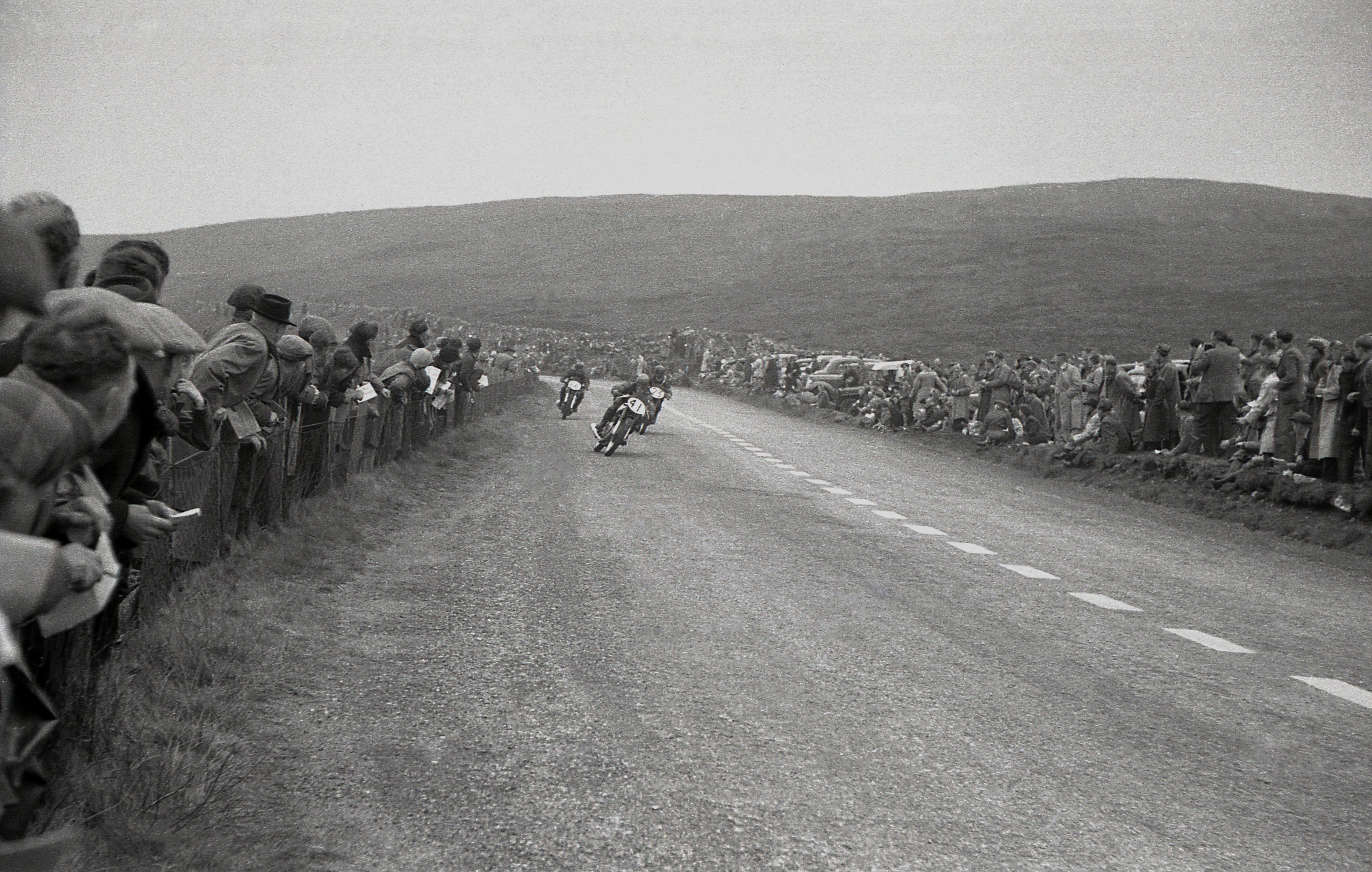
What makes the Isle of Man TT so special?
Ian Wilson, founder of Roadskin motorcycle clothing, explains: ‘The TT races are some of the oldest in the world – it started in 1907! Everybody wants to go – from America, Canada, Japan and of course Europe, especially France and Germany. Some people go year after year after year. It's the Holy Grail of motorcycle racing.
The whole island turns itself over to the TT. The locals are really into it; people buy houses and move there just to watch the TT! It's incredible. The organisers really care about the event and look after people; they treat the visitors nicely, not as grubby bikers. The islanders really embrace the TT and get involved with all the hospitality.

There are all the races to watch, and so many amazing places to watch them from along the route, from coffee shops to churchyards to a mountain top. The bikes themselves are out of this world. On top of that, there’s a big festival in the capital, Douglas. Bushy’s Village is really famous and it's right on the seafront. There’s food, live music and entertainment and it’s a great place to hang out and enjoy the atmosphere. During the TT, the whole promenade is full of motorcycles.
The races cover a huge area; it’s one of the largest circuits in motorsport. The organisers close off a whole load of the roads, so you can’t really get around, and you need to plan ahead a bit. Some spectators go right up on to the mountain, where it’s a bit like Dartmoor. There are very few roads there, except from the one road they actually use to race on. So, you can’t necessarily move until the race is finished. People have their favourite corners to watch the races, while some people sit in the pubs up there all day long just watching the riders whizz by.
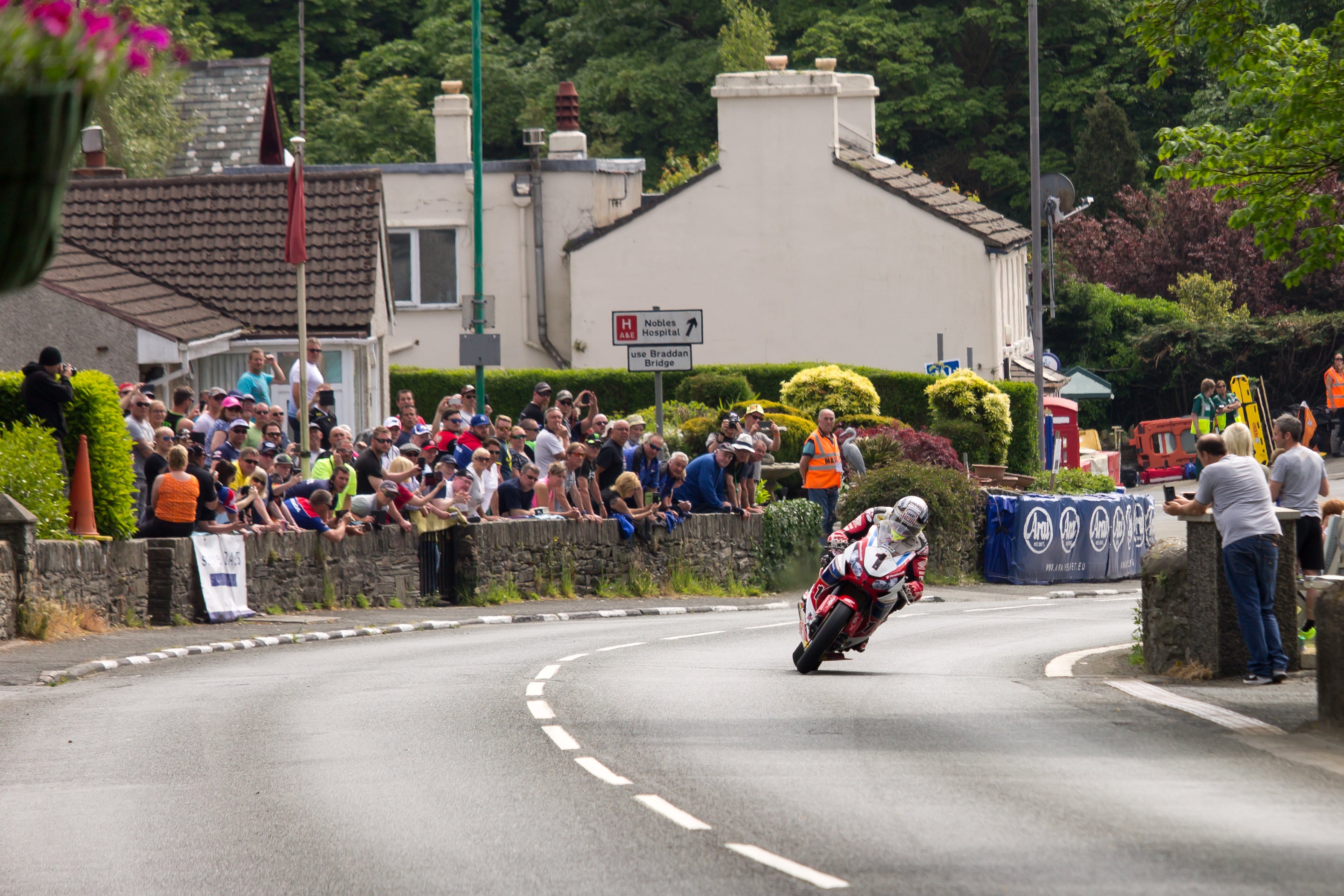
These are road races, as opposed to closed circuit races such as Brands Hatch, which is a special racetrack built with safety barriers, like Silverstone, Donington Park and all the rest of them. The Isle of Man is a road race because it's literally held on the roads. That's the whole vibe. You can sit on top of a brick wall and you see these guys coming, and their helmets and arms are literally rubbing the walls as they go around the corner at 180 mph. It's just staggering. It’s so fast. They’re doing 180mph down what is effectively a high street. If they hit anything, obviously, that’s a problem.’
The history of the Isle of Man TT
The first racing on the Isle of Man took place in 1904 with the Gordon Bennett Eliminating Trial. Originally known as The International Auto-Cycle Tourist Trophy and organised by the Automobile Club, the ‘Highlands course’ was hilly and open to cars only.
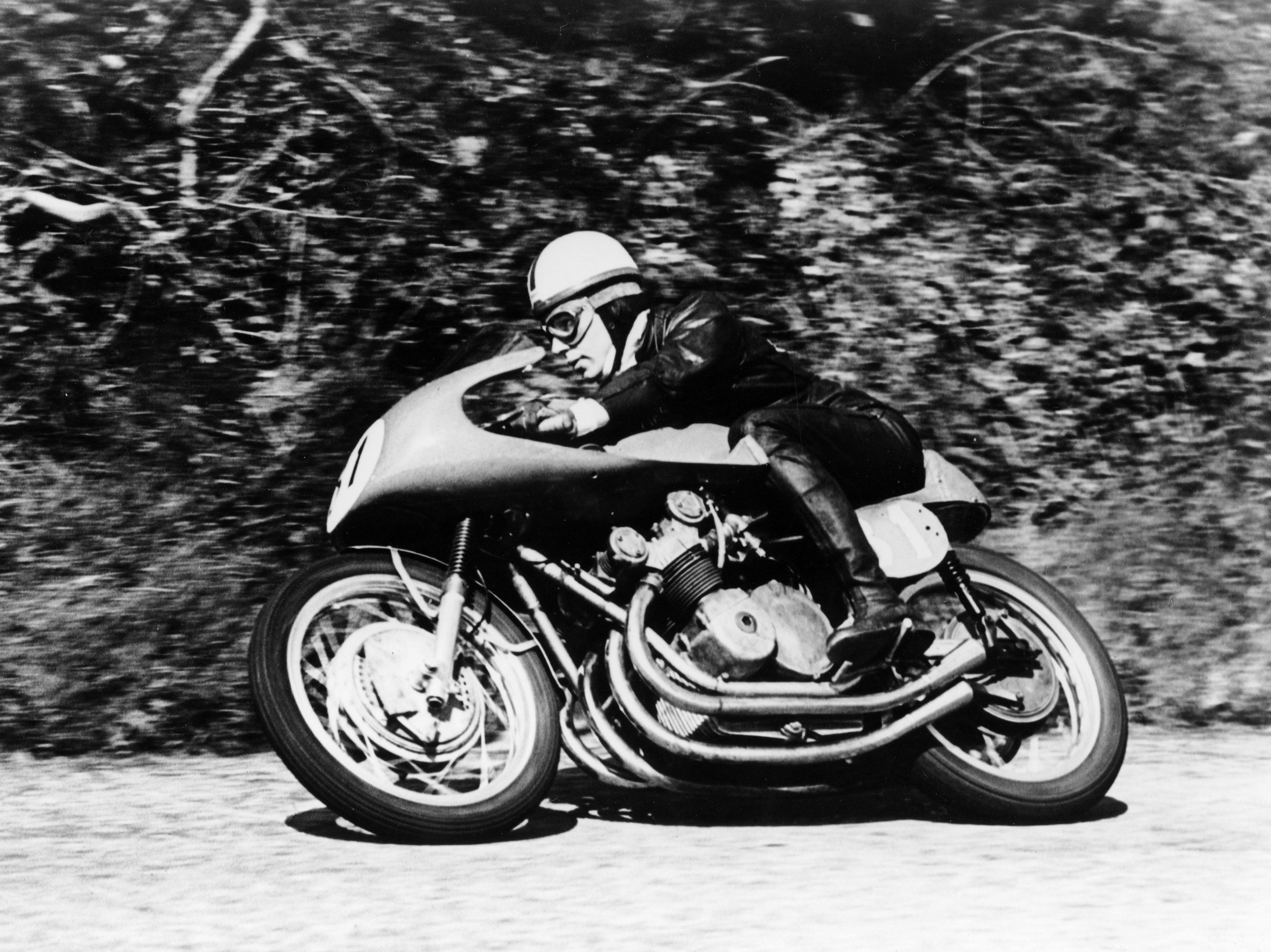
In 1907, the editor of Motorcycle Magazine proposed, at the annual Automobile Club Dinner, a motorcycle race on St John’s Short Course - a level, 15-mile circuit. This request led to the first motorcycle race on the Isle of Man on 28 May that year. There were two classes: single-cylinder motorcycles (average speed 90mph); and twin-cylinder motorcycles (average speed 75mph). Out of 27 competitors, just 12 finished the course. The winner of the single cylinder race was Charlie Collier. He completed 10 laps in four hours, eight minutes.
In 1911, motorcycles took over entirely and the races were now held on the Snaefell Mountain Course. This led to increased popularity among fans due to the high speeds achievable on bikes compared with cars, which made for exciting viewing. This year also saw the first fatality: Victor Surridge. The races grew in popularity and continued to be held annually until the outbreak of World War I.
The TT resumed in 1919 with a new name, the Isle of Man Tourist Trophy. Helmets were now compulsory and the start line moved to the top of Bray Hill. Its reputation as an event for motorcyclists continued to grow. In 1920, the Mountain course was extended to its current 37¾ mile circuit. 1923 saw the introduction of the popular sidecar class. In 1930, parts of the event were broadcast on the BBC for the first time. Throughout the 1920s and 1930s, riders from Britain, Europe, and even America competed - many achieving legendary status, including Stanley Woods who won six times between 1923-1929; Alec Bennett, who won five times between 1931-1937; and Freddie Frith, who was the first rider to win three consecutive titles in 1938-1940.
No racing occurred on the island between 1940 and 1945. When the war was over, the Manx Grand Prix took place in 1946 and the TT in 1947. In 1949, the TT hosted the British round of the inaugural World Motor Cycle Road Racing Championships. Over the following years, there were a number of modifications to the course, to reduce the dangers associated with the race and increase safety for riders and spectators alike. The event still retained its unique appeal due to its unique circuit layout which includes hills, fast straights, tight chicanes, and demanding corners - all of which make for an incredibly challenging course for competitors. 1957 saw the first 100mph lap, by Scotsman Bob McIntyre; and the first woman competitor, Pat Wise, as a passenger in the sidecar event.
In the years since, records have been set and broken; racing stars have been born and legends have been made, including Mike ‘the Bike’ Hailwood, Giacomo Agostini, John McGuinness and Joey Dunlop (with 26 wins, the most in TT race history). There have also been deaths. The TT is held on public roads, not the controlled circuit environments of most modern motorsport. Fatalities at the event cast a shadow over the proceedings (there have been 265 in various races on the Mountain Course since 1911).
After two years out for the pandemic, The Isle of Man TT continues to be held annually each year in May and June. New regulations have been introduced in recent years, such as limiting lap speeds and improved medical attention on-site. The race has achieved a legendary status among motorcyclists worldwide who come to test their skills against one of the riskiest, most challenging courses in existence. It is important to note that there is no obligation for professional motorcyclists to take part. The TT lost its world championship status over safety concerns back in 1977. Riders race at the TT because they want to – and they want to because there’s nothing else like it on earth.
How many people go to the Isle of Man TT?
Thousands of spectators want to witness first-hand just how incredible this race can be, so the TT is big business for the Isle of Man. The first survey of visitors to the event took place in 2010. The record number of attendees so far has been 46,174 (in 2019) and almost two thirds of those people were repeat visitors – testament to the event’s lure. Given that the Isle of Man’s population is around 84,000, this represents a huge influx to this island for this one event.
How do I get to the Isle of Man TT motorcycle races?
By air: The Isle of Man’s airport, Ronaldsway, is located in the south of the island. There are direct flights from Belfast, Bristol, Manchester, Liverpool, London (Heathrow, Gatwick, City), Dublin, Birmingham and Edinburgh. The airport is 30 minutes away from the capital, Douglas, and there is a direct bus service that leaves every 20 minutes.
By sea: One of the advantages of taking the ferry or catamaran is that you can take your motorbike. The operating company is the romantic-sounding Steam Packet Company. There are sailings from Liverpool, Dublin, Belfast and Heysham (in Lancashire). Liverpool and Belfast offer the fastest crossings at 2 hours and 45 minutes. Extra ferries are put on around the TT but we advise you book well in advance – a year if possible – so you can travel on the dates you want.
There are also tour operators than can put together packages around the TT.
Getting around the Isle of Man:
You can bring your bike or hire a car or take taxis, but there is also a bus network and, while you’re there, check out the scenic Victorian railways. A Go Explore card, available online or at the airport, train stations and Douglas Sea Terminal, is a pass that covers both bus and train travel.
Where are the best places to watch the Isle of Man TT races?
With such a long route, there’s no shortage of vantage points to get a tiptop view. Just don’t blink at the wrong time. Here are a few of our favourites:
-
The TT grandstand on Glencrutchery Road, Douglas, is the start and finish point of all the races, with all the accompanying drama. Tickets go fast and early. Alternative viewing point close by is St Ninian’s Church.
-
The most famous pub on the island for watching the TT from is the Creg-ny-Baa. Indeed, the ‘Creg’ is very possibly the most famous pub in motorsport and is a total TT pro, having provided hospitality to spectators for many years.
-
Kirk Michael – if you want to be mere inches away from motorcycles racing along a narrow high street, this is the village for you. Its quaint pub, The Mitre, is the oldest on the island.
-
Ballaugh – for the thrill of the riders flying off the humped bridge (the last remaining bridge on the course). The Raven pub supplies refreshments.
-
Parliament Square, Ramsey. If you want to be in a buzzy town with lots of facilities, with lots of space to spread out, and get a good look at the riders when they are going at relatively slow speeds, head to Ramsey.
Where is the best place to stay during the Isle of Man TT?
The short answer is: anywhere you can find. Places get booked up a year ahead by TT fans who attend the races year after year, returning to the same hotel, bed and breakfast or rental each time. The pop-up IOMTT Village, currently comprising 180 twin-bedded cabins, is close to the action. Other options include a homestay scheme, camping, glamping or bringing your campervan over on the ferry. If you are stuck, contact the Isle of Man’s tourist office.
What is Mad Sunday?
Mad Sunday is the nickname for the middle Sunday of the event, when ordinary motor fans are able to career around the course’s mountain roads in any vehicle, at any speed (incidentally, the Isle of Man has no speed limits). To be fair, going slow is not a sensible option. For some visitors, Mad Sunday is the highlight of the TT, despite the inherent danger in such a ride. This year, however, the middle Sunday, 4 June, has been given over to warm-up practices and the six-lap RST Superbike race. Organisers say that this will give spectators, who may be coming just for the weekend, the opportunity to watch two races, not three. But many TT fans will mourn the loss of the ultimate freedom ride. We’ll be seeing how this schedule tweak goes down. Can it really be the end of the road for Mad Sunday? We wouldn’t bet on it.

What is Roadskin Jeans up to at the Isle of Man TT?
Ian says, ‘Roadskin is part of the big festival right on the seafront at Villa Marina called Bushy’s TT Village. They’ve got huge TV screens for the first time ever so people - including me! - can watch the races from there. There will be the famous Bushy’s beer tent with 120 staff all wearing Bushy’s T-shirts and sweatshirts with Roadskin logos. We are doing our own TT T-shirts, and we’ll be launching some new products – depending on what arrives in time – but hopefully our new lumberjack shirts, some bucket hats, plus our new cargo pants. Oh, and there’ll be Roadskin ale in the beer tent! Our stand is located on top of the arches, so everyone will see us. We’re looking forward to meeting lots of our customers. In the Village, there’s food, drink and entertainment, including a TT- themed golf course, a simulator, a retro games area, a new speciality bar with a cocktail menu for the first time, and around 40 live bands on the main stage. It’s going to be amazing.’
Isle of Man Tourist Trophy Need to Know:
The TT begins on 29 May and finishes on 10 June. For information about the races and schedule, please visit the official website: https://www.iomttraces.com/
Look like a winner in the finest protective motorcycle wear on the market - visit Motorcycle jeans at trade prices. Protective yet stylish. – Roadskin® and join us virtually at the TT via our social media channels:
Roadskin | Facebook
Roadskin On Tour | Tunbridge Wells | Facebook
Roadskin Motorcycle Wear - YouTube
Roadskin (@roadskinuk) | Instagram
Roadskin On Tour (@roadskinontour) | Instagram
Lucky enough to be going along to the TT? Come and say hello at our stand at Bushy’s TT Village, Villa Marina, Douglas. Doors open 1 June and we’ll be here for the duration: Isle of Man TT | Bushy's TT Village | Isle of Man (bushysttvillage.co.uk)
For general visitor information: Visit Isle of Man: Book Your Island Escape
